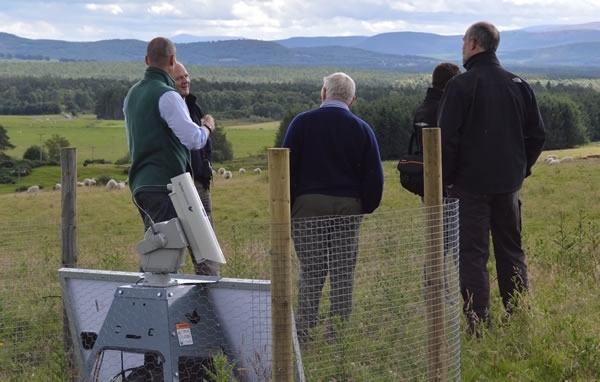By Dave Parish, Head of Head of Scottish Lowland Research
At the end of July, GWSDF Auchnerran hosted a meeting with a group of wildlife managers to discuss the LIFE Laser Fence project and its applicability to a variety of situations. The Laser Fence project is a partnership between several European organisations, led by Liverpool John Moores University, and is investigating the general question: can laser technology be used to scare mammals away from designated areas?

The lasers being tested are currently successfully used to scare birds away from a variety of agricultural areas where they might damage crops, and more sensitive situations where, for example, there is the potential to disrupt air traffic. If the project successfully demonstrates that mammals respond in a similar manner, it could open the door to a variety of scenarios where lasers might replace more expensive or less desirable methods of control.
The meeting, attended by representatives of Scottish Natural Heritage and Transport Scotland, covered lots of ground but often returned to the subject of deer, which can cause a variety of problems in forestry and on roads. Current tests of the laser systems at GWSDF have focused on rabbits – an abundant, damaging pest on the farm – but we hope to soon consider deer too, and they are also a major focus for some of the other project partners in England and Spain.
As well as deer, trials this autumn and winter will consider the impact of lasers on rats and certain common predatory species – ones that might, for example, prey on wader eggs and chicks (of which we also have lots at Auchnerran). If at the end of the project in 2020 we can propose ways in which lasers can successfully reduce the numbers of pest mammals entering certain areas, this technology could provide another tool for wildlife managers in a variety of situations.